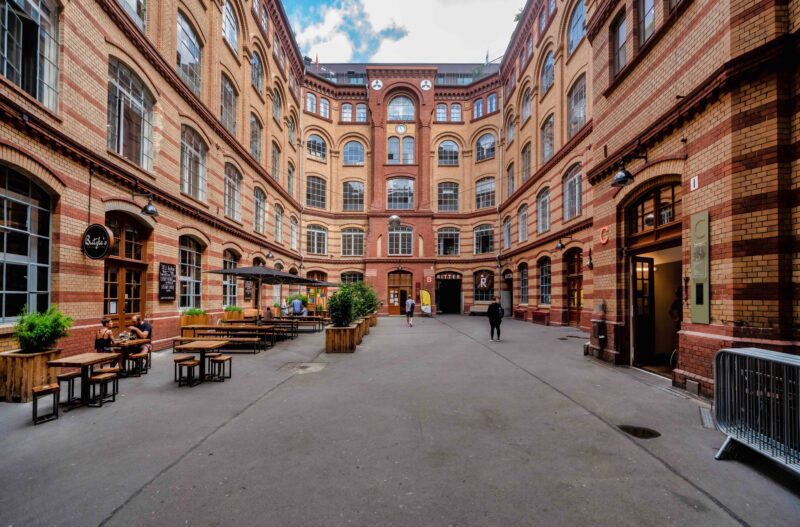Smart technology: its past, present and future
Posted:
3 / 15 / 2023
Tagged:
Since WiredScore was founded ten years ago in 2013, the world of smart technology and its role in commercial real estate has drastically changed.
We have always used technology to improve our built environment, whether that be Warren Johnson’s invention of the first thermostat to monitor room temperature in the late 1800’s, or Willis Carrier’s design for the first modern air-conditioning system in the 1900’s. Today, when we hear the word technology, we are much more likely to think of digital and smart solutions. However, the goal of technology hasn’t changed – and it’s unlikely to in the future. We are still looking to increase a building’s efficiency and improve a user’s experience.
The digital landscape has evolved dramatically over the past few decades, from the first personal computer in the 1970s to today’s Internet of Things (IoT). Our expectations of digital products and services have increased as well, to the point where we often cannot live our day-to-day lives without technology.
Over the past two decades, the Internet of Things (IoT) became a foundation of the workplace. Office workers had already been using devices such as smartphones and laptops for some time but the arrival of cloud computing, improved software and apps made them essential. Styles of working such as hot-desking also became more popular, requiring increased flexibility in the workplace.

The IoT created a network of devices that needed to be synchronized. That’s when demonstrating a commitment to first-class digital connectivity in shared spaces, such as offices, became even more essential.
Over the past two decades, the Internet of Things (IoT) became a foundation of the workplace. Office workers had already been using devices such as smartphones and laptops for some time but the arrival of cloud computing, improved software and apps made them essential. Styles of working such as hot-desking also became more popular, requiring increased flexibility in the workplace.
In 2013, WiredScore was founded in New York to meet the needs of office occupiers who were starting to look for better digital connectivity in the workplace. Landlords and developers needed to keep up with this growing trend by improving in-building technology. Our Founder and CEO, Arie Barendrecht, saw that the real estate sector needed a way of identifying and promoting buildings that demonstrated best-in-class technology, and WiredScore was born
The late 2010s saw a steady improvement in the hardware and software of the IoT. But it was the arrival of 2020 that brought a new set of challenges, which needed a new set of solutions. The COVID-19 pandemic saw the majority of people working from home for the first time. ‘Bad internet’ became a keyword in many video calls and the reality of our reliance on technology was fully recognized.

After a year of working from home, the office needed to step up to bring occupiers back to the workplace.
The late 2010s saw a steady improvement in the hardware and software of the IoT. But it was the arrival of 2020 that brought a new set of challenges, which needed a new set of solutions. The COVID-19 pandemic saw the majority of people working from home for the first time. ‘Bad internet’ became a keyword in many video calls and the reality of our reliance on technology was fully recognized.
2021 marked the one-year of the pandemic and, as the world slowly opened back up, we found it was a very different place. Hybrid working became the norm and the real estate sector found itself playing catch-up. With 40% of workers stating they were more efficient when working from home, how could they be brought back into the workplace? The answer to this was found in improving occupier experience through digital connectivity and smart technology.
Despite the term ‘smart building’ gaining popularity before the pandemic, it has become much more commonplace since. This is largely due to landlords and developers gaining a better understanding of what a smart building is and how it can benefit them and their occupiers. WiredScore’s SmartScore certification, launched in 2021, helps to communicate a building’s commitment to best-in-class smart technology.
The adoption of smart buildings not only improves the experience of the occupier, it also helps landlords and developers ensure their assets are future-ready. With 40% of all carbon emissions coming from the built environment, it is more important than ever to build with a more sustainable future in mind. While not every smart building is a sustainable building, around 60% of office workers in 2022 believe sustainability should be a priority for landlords.

Ready to retrofit? Making existing assets smart is the next step in smart building development.
The adoption of smart buildings not only improves the experience of the occupier, it also helps landlords and developers ensure their assets are future-ready. With 40% of all carbon emissions coming from the built environment, it is more important than ever to build with a more sustainable future in mind. While not every smart building is a sustainable building, around 60% of office workers in 2022 believe sustainability should be a priority for landlords.
When looking ahead to the future of the office, it is clear to see that smart technology and in-building connectivity is going to remain a priority for occupiers. In fact, recent research conducted in North America showed 87% of decision makers put sound digital infrastructure and smart technology in their top five requirements for office space. In addition, 77% said that they would terminate their lease if they struggled with connectivity.
WiredScore’s SmartScore certification was created to standardize the understanding of digital technology in buildings. It provided a way of measuring how in-building technology affected areas such as sustainability, wellbeing, energy-efficiency and many more. Today, the real estate industry is much more aligned on what a smart building is, meaning we have entered a stage of accelerated implementation.
So, what comes next?
As consumers, we expect more insight into the world around us. In fact, it’s not too hard to imagine a world where our phones tell us about the efficiency of the buildings around us. So, as the cost of technology comes down and the potential return on investments goes up, we expect to see a continued increase in the adoption of smart technology across a wide range of assets, not just a few trophy buildings.
Smart buildings and smart technology are here to stay
Learn more by reading the reports mentioned in this article, and more, by following the link below.
Read now